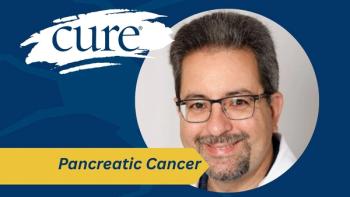
Gilotrif's Approval Expanded to Some Patients With Metastatic NSCLC
The Food and Drug Administration (FDA) expanded the approved use for Gilotrif (afatinib). The drug can now be used to treat patients with metastatic non-small cell lung cancer (NSCLC) who have uncommon EGFR alterations in L861Q, G719X and/or S768I.
The Food and Drug Administration (FDA) expanded the approved use for Gilotrif (afatinib). The drug can now be used to treat patients with metastatic non-small cell lung cancer (NSCLC) who have uncommon EGFR alterations in L861Q, G719X and/or S768I.
The approval for uncommon, non-resistance EGFR mutations was based on findings from 32 patients in the phase 2 LUX-Lung 2 trial (LL2) and the randomized phase 3 trials known as LUX-Lung 3 (LL3) and LUX-Lung 6 (LL6). The confirmed objective response rate (ORR) with Gilotrif in these patients was 66 percent. Of those responding, 52 percent had duration of response lasting 12 months or longer and 33 percent had response duration of at least 18 months.
Gilotrif was initially approved by the FDA in 2013 for the treatment of patients with metastatic NSCLC with exon 19 deletions or exon 21 L858R substitutions. In 2016, this indication was expanded to include patients with squamous histology following progression on a platinum-based chemotherapy.
"For our patients who have up until now had no proven options, we actually have an evidence-based treatment option in afatinib, in addition to chemotherapy, that I think will be a very valuable addition," H. Jack West, M.D., thoracic oncologist, Swedish Cancer Institute of Swedish Medical Center, told CURE in an interview. "Over the last two years we have learned that EGFRmutation isn't just a binary ‘yes or no, you have it.’ It's more nuanced than that, and 88 percent to 90 percent of patients have one or two common EGFR mutations but that leaves 10 percent to 12 percent of our mutations in EGFR that are rare mutations."
The overall frequency of patients with uncommon EGFR mutations was 18 percent in LL2 (23 patients), and 11 percent in both LL3 (37 patients) and LL6 (40 patients). A posthoc analysis examined 75 patients (13 percent) across the three trials who received Gilotrif and were positive for uncommon EGFR mutations, which included resistant alterations. The approval was specifically for those with nonresistant EGFR alterations, which were present in 32 patients in the trials.
"Historically, for these rare mutations, we might have been futile in giving one of the first-generation inhibitors, like erlotinib (Tarceva) or gefitinib (Iressa), which has not been particularly successful. But, afatinib has been studied better, and clearly does have some activity for the majority of these," said West. "It does not work well for exon 20 insertions or T790M but for many of the other mutations that we do pick up we do now have an option with the approval of afatinib for these rare mutations."
In the 32 patients, the median age was 60.5 years (range, 32-79), and the majority were Asian (97 percent). Most patients had an ECOG performance status of 1 (63 percent), with 38 percent having a score of 0. Two-thirds of patients were never smokers (66 percent) and most had stage 4 disease (97 percent), with the remainder having stage 3b NSCLC. Prior systemic therapy for advanced or metastatic disease had been received by 12 percent of patients.
Overall, 21 patients had a single alteration, with the remainder having two. The one patient with a single S7681 mutation had a response lasting 37.3 months with Gilotrif. Six of eight patients (75 percent) with G719X alterations (eight patients) responded, with response duration lasting up to 25.2 months. Seven of 12 patients (58 percent) with L861Q mutations responded, with response duration ranging from 2.8 to 20.6 months.
The most common co-occurring alterations were in S768I and G719X, where four of five patients responded (80 percent). One of two patients with S768I and L858R alterations responded, with an ongoing response duration of longer than 34.5 months. Two of three patients with G719X and L861Q alterations responded and the one patient with L861Q and Del 19 did not respond.
An analysis of safety specific to the uncommon alterations was not conducted. The FDA noted that across studies the most common adverse events (AEs) reported in at least 20 percent of patients were diarrhea, rash, acneiform dermatitis, stomatitis, paronychia, dry skin, decreased appetite, nausea, vomiting and pruritus. For the broader indication, serious AEs were reported in 29 percent of patients treated with Gilotrif. The most frequent serious AEs were diarrhea (6.6 percent), vomiting (4.8 percent) and dyspnea, fatigue, and hypokalemia (1.7 percent each).
The recommended dose from the FDA was 40 mg once daily, which is the broadly approved dose. For those with renal impairment, the label recommends starting at a dose of 30 mg daily. In pivotal studies for Gilotrif, 57 percent of patients required a dose reduction due to AEs and 14 percent of patients discontinued treatment due to AEs.





